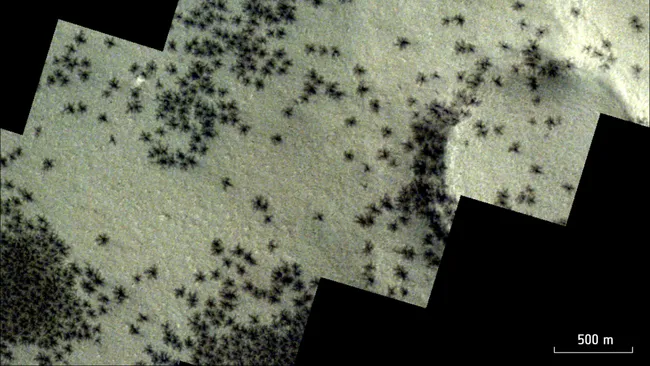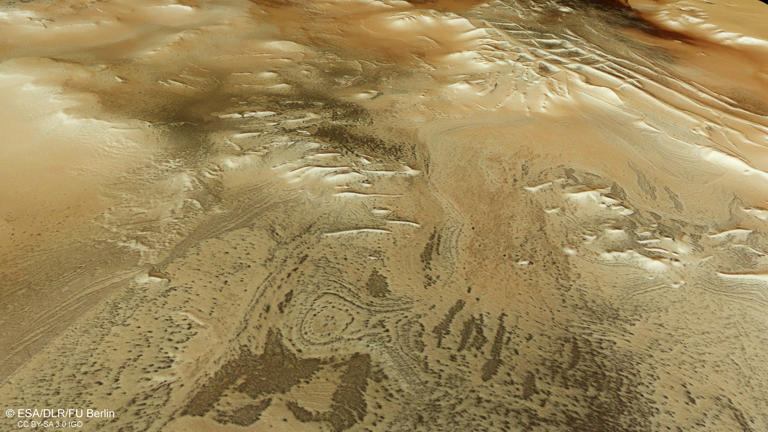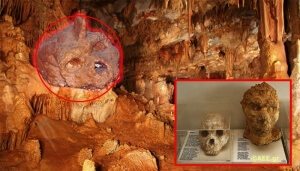A glimpse at recent photos from the European Space Agency might lead you to believe that spiders are about to emerge en masse from the surface of Mars.
However, those with a fear of spiders can rest easy. Despite the Mars orbiter images hinting at an invasion of these eight-legged creatures, the reality is quite different. It’s a peculiar chemical reaction captured by probes from the European Space Agency that’s responsible for the spider-like features seen in a region known as Inca City on Mars’ southern pole.

As the ESA detailed, the images, collected on February 27 by the Mars Express orbiter, display clusters of dots formed from seasonal carbon dioxide gas eruptions. This is not the first time this unique phenomenon has been observed. The ESA’s ExoMars Trace Gas Orbiter, along with NASA spacecraft, have also recorded the spidering effect.
So, what exactly are these ‘spider’ formations? They occur as the Martian spring begins to warm the surface.
The warming sun strikes the layers of carbon dioxide ice accumulated during the frigid winter months, causing the ice to thaw. The heat turns the lowest layers of ice into gas. This gas then heats up and accumulates, eventually erupting through the overlying ice sheets, pulling dark dust upwards in a geyser-like fashion.
As the dust resettles, it creates patterns on and below the surface, forming dark spots that mimic the appearance of spiders with sprawling legs and bodies.
This phenomenon is unique and has no terrestrial counterpart.

ESA’s Mars Express orbiter has captured the latest evidence of ‘spiders’ Recent images from ESA’s Mars Express orbiter, which has been orbiting Mars since 2003, showcase formations that span 0.03 to 0.6 miles across and resemble channels of gas.
These dark spots, indicative of “spiders,” were observed in Inca City, an area named for its likeness to Earth’s Inca ruins. Another ESA mission, the ExoMars Trace Gas Orbiter (TGO), also captured detailed images of these tendril-like patterns in a nearby area in 2020. While the Mars Express provides images of the dark spots on the surface, TGO offers views of the intricate, web-like channels etched into the ice below.
NASA’s Mars Reconnaissance Orbiter also documented the emergence of “spiders” from the landscape in images taken in 2018.
The Mars Express images reveal dark spots traversing the high hills and vast plateaus of Inca City, discovered in 1972 by NASA’s Mariner 9 probe. The origins of Inca City’s ridge and wall formations remain uncertain, though they are thought to be fossilized sand dunes. In 2002, NASA’s Mars Orbiter disclosed that Inca City is at the center of a large circle about 53 miles in diameter, likely formed from a meteorite impact that created a crater. Subsequent faults may have been filled with lava, which, over time, eroded to unveil a structure resembling ancient ruins.









